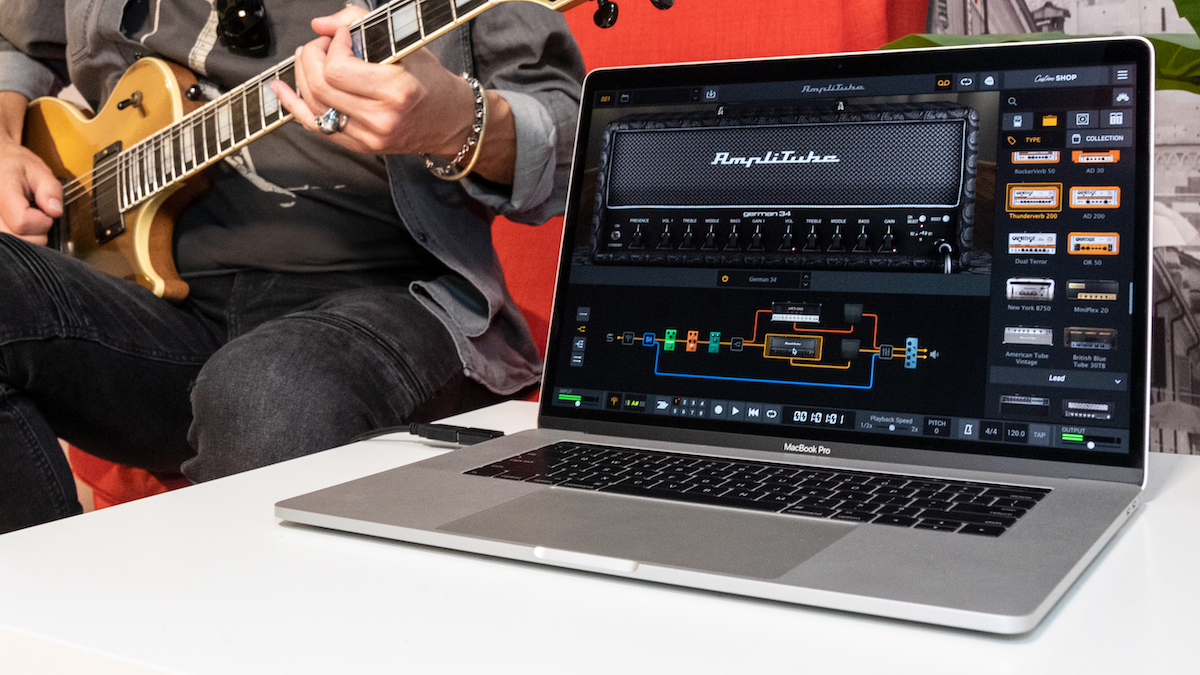Guitar World Verdict
AmpliTube 5 is more than just a hugely inspiring collection of officially endorsed guitar amps and FX. Digging deeper reveals an impressive tool for sound design.
Pros
- +
Massive collection of amps and FX
- +
Modelling is first class
- +
Many models officially approved by major brands
- +
Extensive routing possibilities
- +
Enormous fun
Cons
- -
UI is ultra-realistic but slightly clunky because of it
- -
Max version is quite an investment but still good value
You can trust Guitar World
When AmpliTube debuted a couple of decades ago most of us were excited and intrigued by the promise that modelling held, but I suspect few of us imagined just how far the technology could, and would, be pushed.
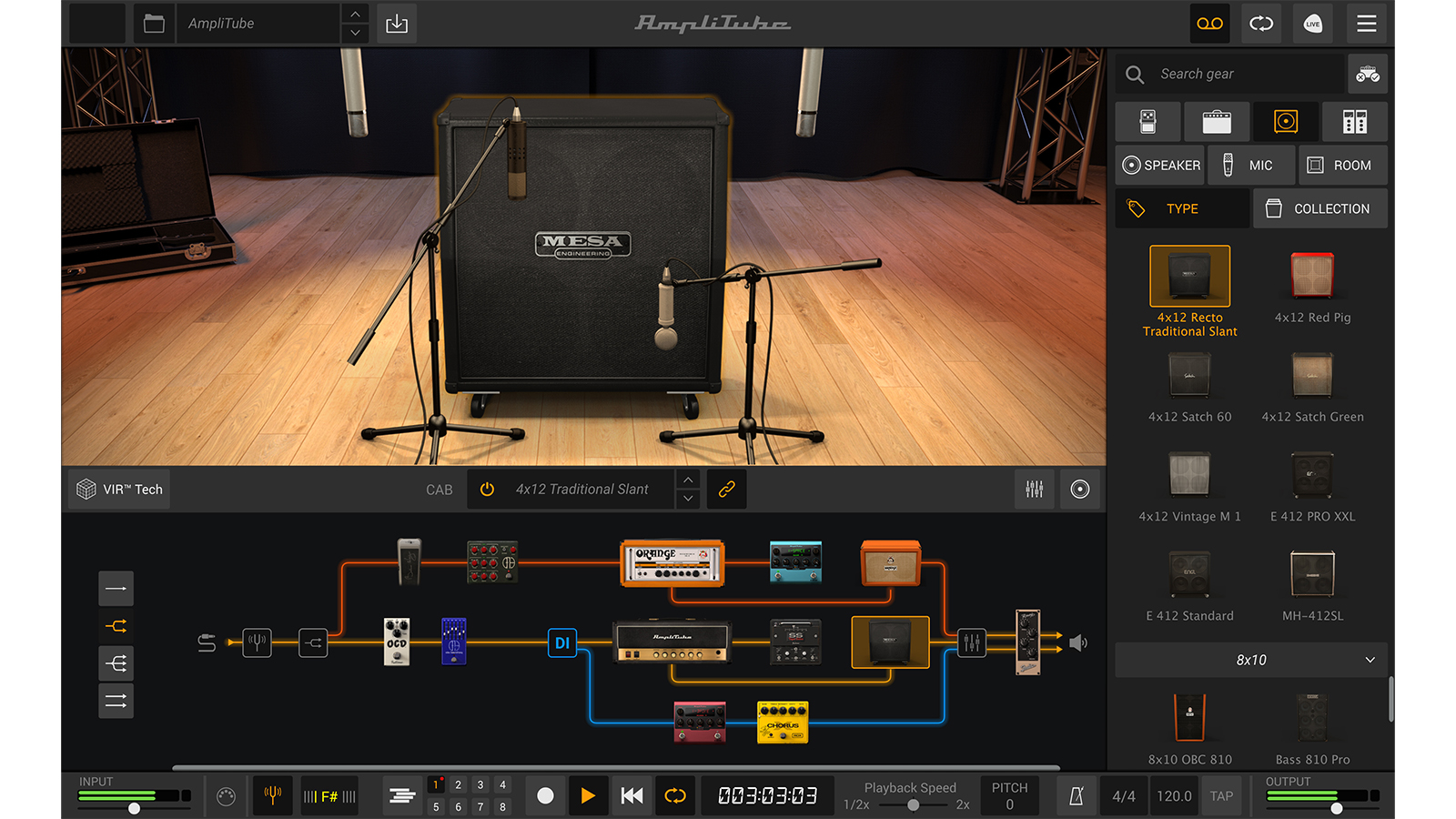
AmpliTube CS: Free
AmpliTube SE: $149.99/€149.99
AmpliTube Standard: $299.99/€299.99
AmpliTube MAX: $599.99/€599.99
Back then it seemed astounding that, for a modest outlay, we could fill our hard drives with a dream collection of amps that sounded somewhat like the unaffordable ones our guitar heroes and heroines were using.
Today, modelling retains that appeal but guitar plugins like AmpliTube has evolved into something so much richer. I still feel my heart fluttering when I fire up a model of an amp that I’m almost certainly never going to own, like a ’57 Bandmaster, but the real joy for me is developing sophisticated routings that would be almost impossible to configure in real life. AmpliTube is no longer just a fancy collection of amps and FX, it’s a comprehensive sound design package.
Sounds scary? Don’t worry. Despite the depth, it’s still a very natural and intuitive piece of software to use, one that can be as simple or as complex as you like. Here we’re looking at the latest incarnation, IK Multimedia AmpliTube 5.
A taste for every budget
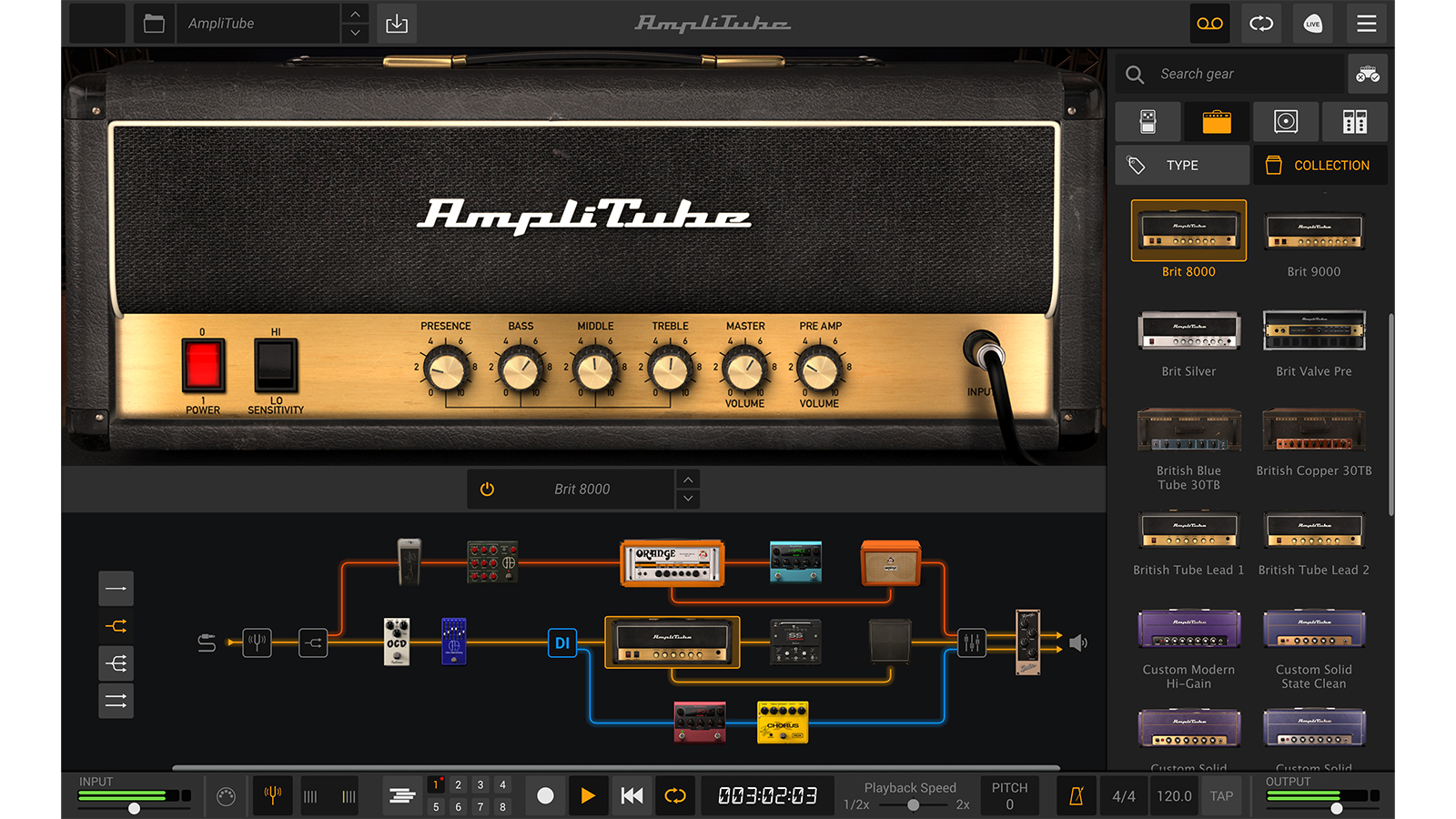
AmpliTube 5 is available in four flavors. First up, AmpliTube CS is the slimline version. It costs nothing and includes 42 essential amps and effects to get you salivating. Think of AmpliTube SE as a lite bite that sates a modest appetite with 80 pieces of gear for a modest $149.99/€149.99. The standard edition, the all-day breakfast if you like, of AmpliTube costs quite a bit more at $299.99/€299.99 but it does include over 170 pieces of kit. You’re free to add additional individual pieces of gear within AmpliTube, or buy larger custom bundles from IK’s online store, when you crave (or can afford) them.
Finally, AmpliTube MAX is the royal banquet. It includes almost every option you can think of – more than 400 gear models, including 11 brand/artist collections – but does cost $599.99/€599.99. For completeness, this is the version that I’m primarily concerned with in this AmpliTube 5 review, but the cheaper versions do share much of its functionality, lacking only the whole catalogue of amps and effects.
Hyper-realistic UI
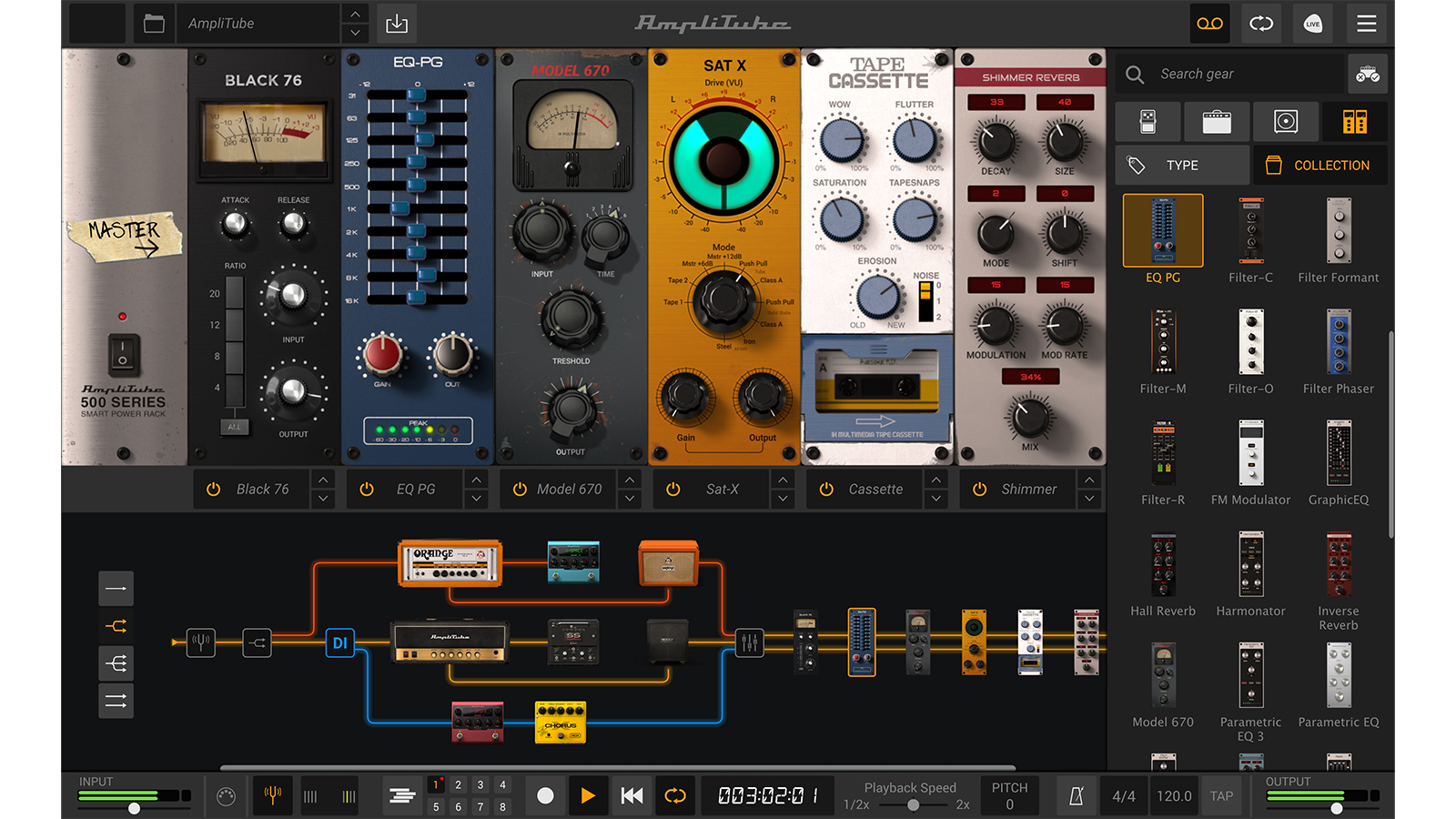
Whether you run AmpliTube as a standalone application on Windows/MacOS or access it within your DAW as a plugin (AU, VST 2, VST 3, AAX) the user experience is very similar. Essentially, on launch you are presented with a virtual signal path that you can use to chain together amps and effects.
The graphic representations of both the path and the kit are hyper-realistic skeuomorphic images, which means they look just like the real thing, albeit in 2D. For example, the control panel on AmpliTube’s version of the Orange Dual Terror is authentically like the physical amp, and the same goes for the T.Rex Mudhoney and every other bit of gear for that matter.
The signal path is just as realistic. Essentially, you daisy-chain amps and effects together just as you would in real life but using virtual cables. It’s as easy as dragging an amp, cabinet or effect onto the path. If you want to tweak a particular parameter just select the relevant piece of gear and its control panel will appear in the main window. So, if you already know your way around classic amp controls and can figure out the order in which you want your effects then you’re halfway there.
Of course, where AmpliTube differs from real life is that you have an almost limitless amount of kit at your disposal. You can arrange that kit in complex paths that can be split two or three ways or run in parallel for powerful stereo effects. And, regardless of path type, you can always run additional DI routings for effects.
Of course, where AmpliTube differs from real life is that you have an almost limitless amount of kit at your disposal.
What saves AmpliTube from immediately degenerating into a bewildering confusion of audio befuddlement is the visual clarity of the virtual signal and the software’s powerful search functionality.
Every path is clearly color-coded so that it’s easy to trace, and each piece of kit is generously arranged along it for immediate identification and control.
Not sure what to add? Fortunately, AmpliTube’s vast library can quickly be sorted by effect, amp, cab and rack. It’s then possible to drill down further into type (compressor, EQ etc or dirty, crunch, clean and so on), collection (genre, artist or brand) or speaker, mic and room qualities.
Cab and speaker implementation is ridiculously powerful. Not only can you mix and match guitar cabs with amp heads, AmpliTube lets you experiment with different speaker types, mics and even precise mic placement. New to version 5 is IK Multimedia’s astonishing Volumetric Impulse Response (VIR) tech that uses 600 IRs per speaker. You can precisely place a mic in 3D space, and it will faithfully pick up the interactions between neighboring speakers, the cabinet and the floor. IK Multimedia reckons it recorded 143,000 IRs for AmpliTube 5’s 100 cabinets and if that’s not enough you can even upload your own.
Modelling quality
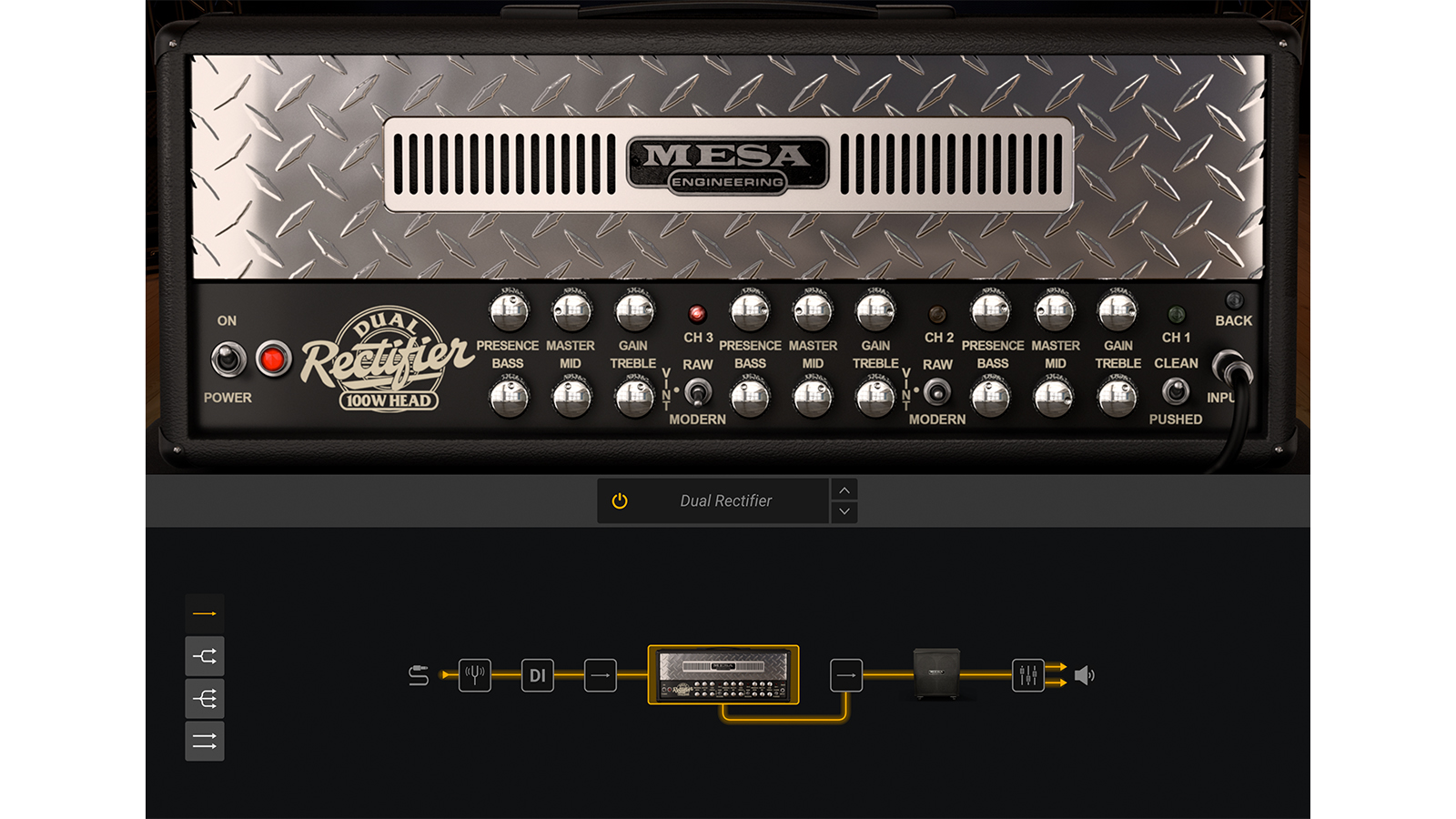
Just how accurate is the modelling? Well, if we accept that no two vintage Fender, Marshall or even contemporary Mesa Boogie amps will ever sound exactly alike then we also must accept that modelling is an imprecise art.
With version five, IK Multimedia has moved to what it calls Dynamic Interaction Modelling, which not only works on a component level but also accounts for the influence the interaction of the entire system has on each individual component in a non-linear way. For the non-geeks among us it’s sufficient to recognize that AmpliTube’s models are endorsed by the likes of Fender, Orange, Mesa Boogie, Brian May and Slash. You’re not going to find a more accurate software modelling package.
And the effects? Not only are the effects excellent but the breadth of what’s available is simply crazy. To give you some idea, there’s a manual dedicated to just amps and effects. It runs to 530 pages. The recently released 5.4 version now includes IK Multimedia’s X-GEAR series of contemporary-voiced pedals too.
That’s not all folks
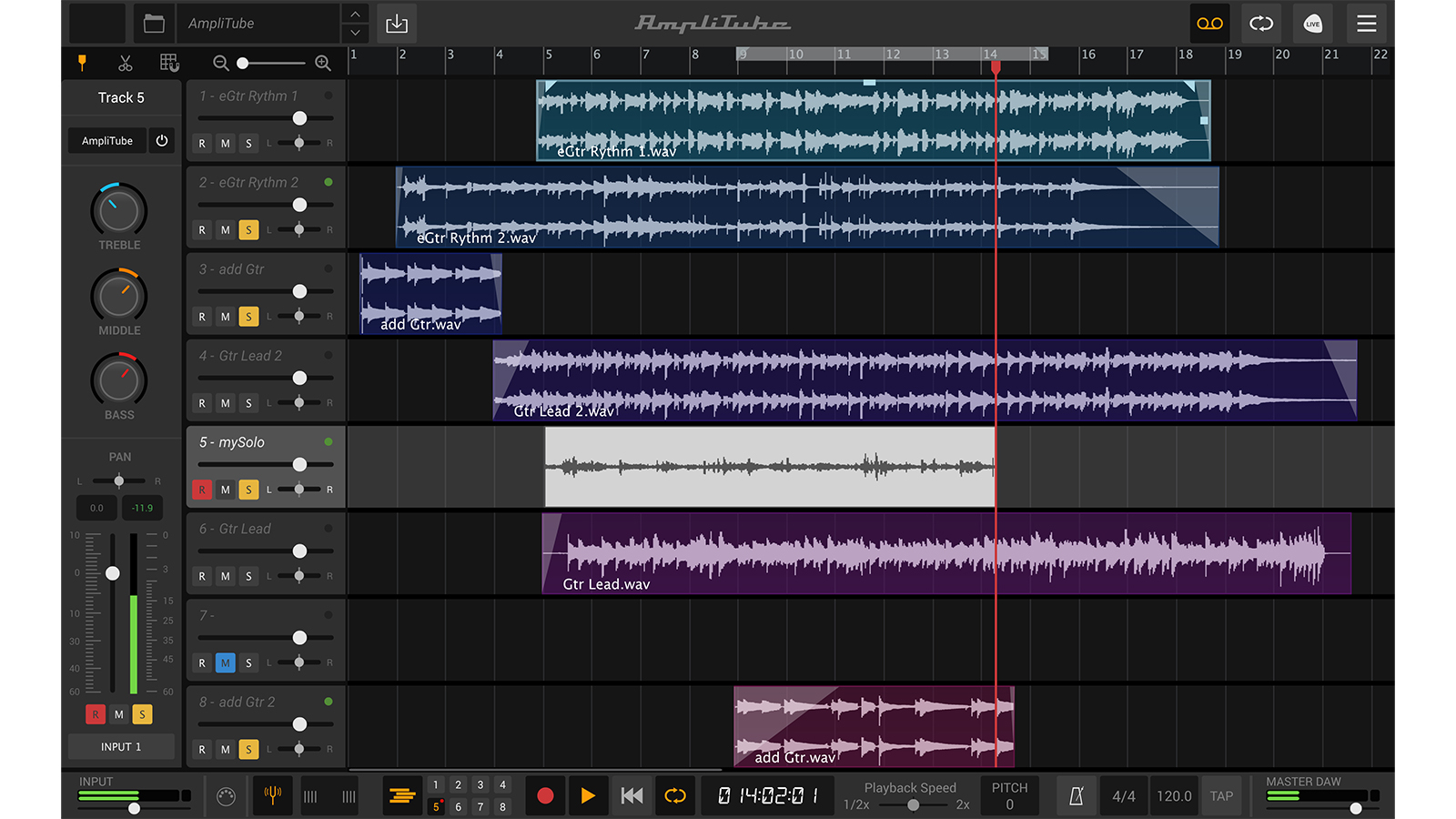
Yes, there’s more. AmpliTube 5 also features a DAW-like eight-track recorder and mixer, a fully-featured looper and Live Mode, which integrates with IK Multimedia’s iRig Stomp I/O pedalboard and AXE I/O interface hardware. There’s extensive MIDI and automation support too. It’s a complete recording and performance suite that’s aimed at guitarists but can be used for keyboards and even vocals.
IK Multimedia AmpliTube 5 review: Conclusion
With version 5, AmpliTube has evolved into an extraordinarily powerful sound design environment. The quality of the modelling is superb, the quantity of included gear is unsurpassed and the scope of what it can achieve is limited only by your creativity. Whether you want to dabble with rare boutique amps, develop characterful tones from unusual routings in your DAW or use it to play complex live sets, it’s hard not to recommend AmpliTube 5.
IK Multimedia AmpliTube 5 review: Specification
- It works as a standalone application for Windows and MacOS, or as a DAW plugin (AU, VST 2, VST 3, AAX)
- Price: free up to $599.99/€599.99
- Buy from IK Multimedia
When Simon's childhood classical guitar teacher boasted he 'enjoyed a challenge', the poor man had no idea how much he'd underestimated the scale of the task ahead. Despite Simon's lack of talent, the experience did spark a lifelong passion for music. His classical guitar was discarded for an electric, then a room full of electrics before Simon discovered the joys of keys. Against all odds, Simon somehow managed to blag a career as a fashion journalist, but he's now more suitably employed writing for Guitar World and MusicRadar. When not writing or playing, he can be found terrifying himself on his mountain bike.
